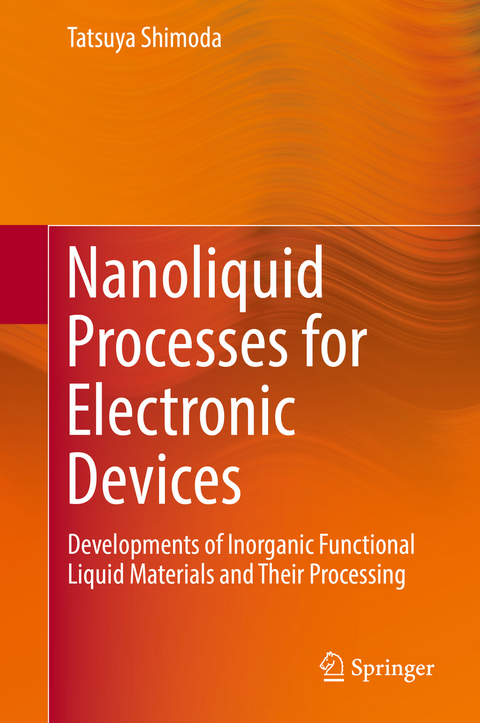
Nanoliquid Processes for Electronic Devices
Springer Verlag, Singapore
978-981-13-2952-4 (ISBN)
In the first part of the book, the research on liquid silicon (Si) materials is described. Because the use of a liquid material is a quite new idea for Si devices, this book is the first one to describe liquid Si materials for electronic devices. Si devices as typified by MOS-FET have been produced by using solid and gas materials. This volume precisely describes a series of processes from material synthesis to device fabrication for those who are interested and are/will be engaged in liquid Si-related work. Inthe latter part of the book, a general method of how to make good oxide films from solutions and a new imprinting method to make nanosized patterns are introduced. For making oxide films with high quality, the designing of the solution is crucial. If a solution is designed properly, a gel material called "cluster gel" can be formed which is able to be imprinted to form nanosized patterns.
The anticipated readers of this book are researchers, engineers, and students who are interested in solution and printing processes for making devices. More generally, this book will also provide guidelines for corporate managers and executives who are responsible for making strategies for future manufacturing processes.
Tatsuya Shimoda Professor, Japan Advanced Institute of Science and Technology Member of academic society: MRS Japan Japan Society of Applied Physics (JSAP) The Japanese Sol-Gel Society Society for scientific committee: A member of Nanoimprint Technology Study Group in JSAP A member of Single-Nanometer Figuration and the Structure-Induced Property Study Group in JSAP
Liquid process.- Guide to silicon-based materials.- Liquid silicon.- Thin film formation by coating.- Liquid vapor deposition using liquid silicon (LVD).- Liquid silicon family materials (1).- Liquid silicon family materials (2).- Nano pattern formation using liquid silicon.- Development of solar cells using liquid silicon.- Development of thin film transistors using liquid silicon.- Guide to Oxide-based materials.- Improvement of solid through improved solutions and gels (1).- Improvement of solid through improved solutions and gels (2).- Direct imprinting of gel (nano-Rheology Printing).- Novel materials proper to liquid process.- Thin film oxide-transistor by liquid process (1).- Thin film oxide-transistor by liquid process (2).- Thin film oxide-transistor by liquid process (3).- Device fabrication by n-RP.
| Erscheinungsdatum | 05.02.2019 |
|---|---|
| Zusatzinfo | 262 Illustrations, color; 172 Illustrations, black and white; XVI, 590 p. 434 illus., 262 illus. in color. |
| Verlagsort | Singapore |
| Sprache | englisch |
| Maße | 155 x 235 mm |
| Themenwelt | Naturwissenschaften ► Chemie ► Physikalische Chemie |
| Technik ► Elektrotechnik / Energietechnik | |
| Technik ► Maschinenbau | |
| Schlagworte | Liquid oxide material • Liquid silicon • Printable electronics • Rheology printing • solution process |
| ISBN-10 | 981-13-2952-4 / 9811329524 |
| ISBN-13 | 978-981-13-2952-4 / 9789811329524 |
| Zustand | Neuware |
| Haben Sie eine Frage zum Produkt? |
aus dem Bereich


